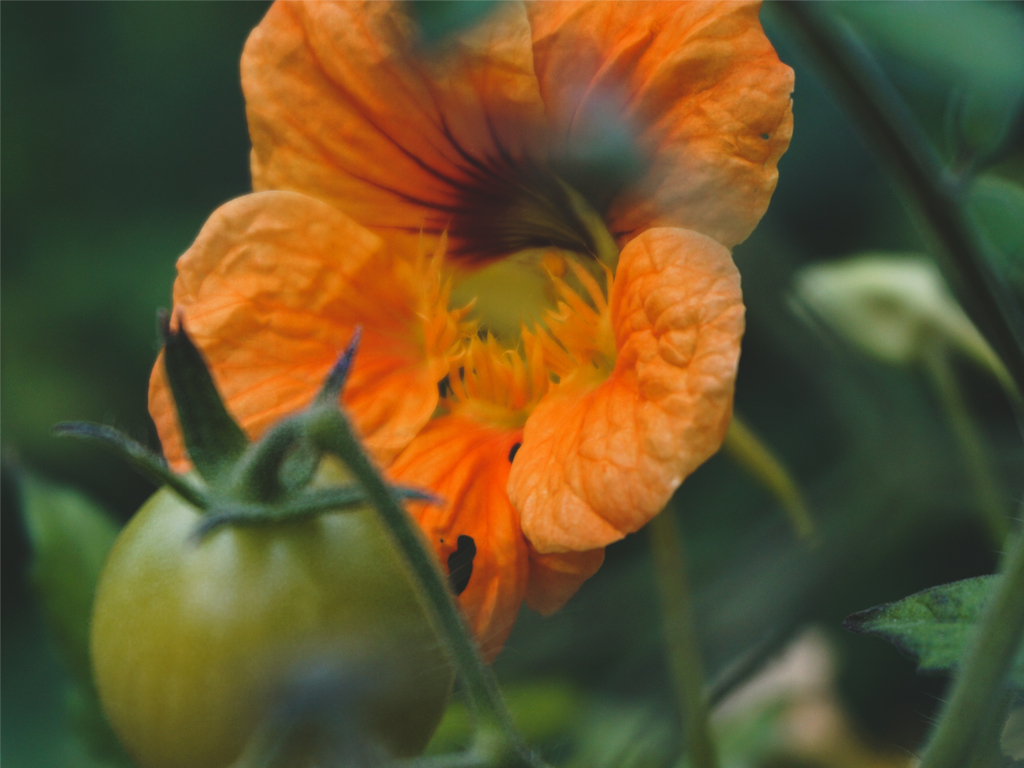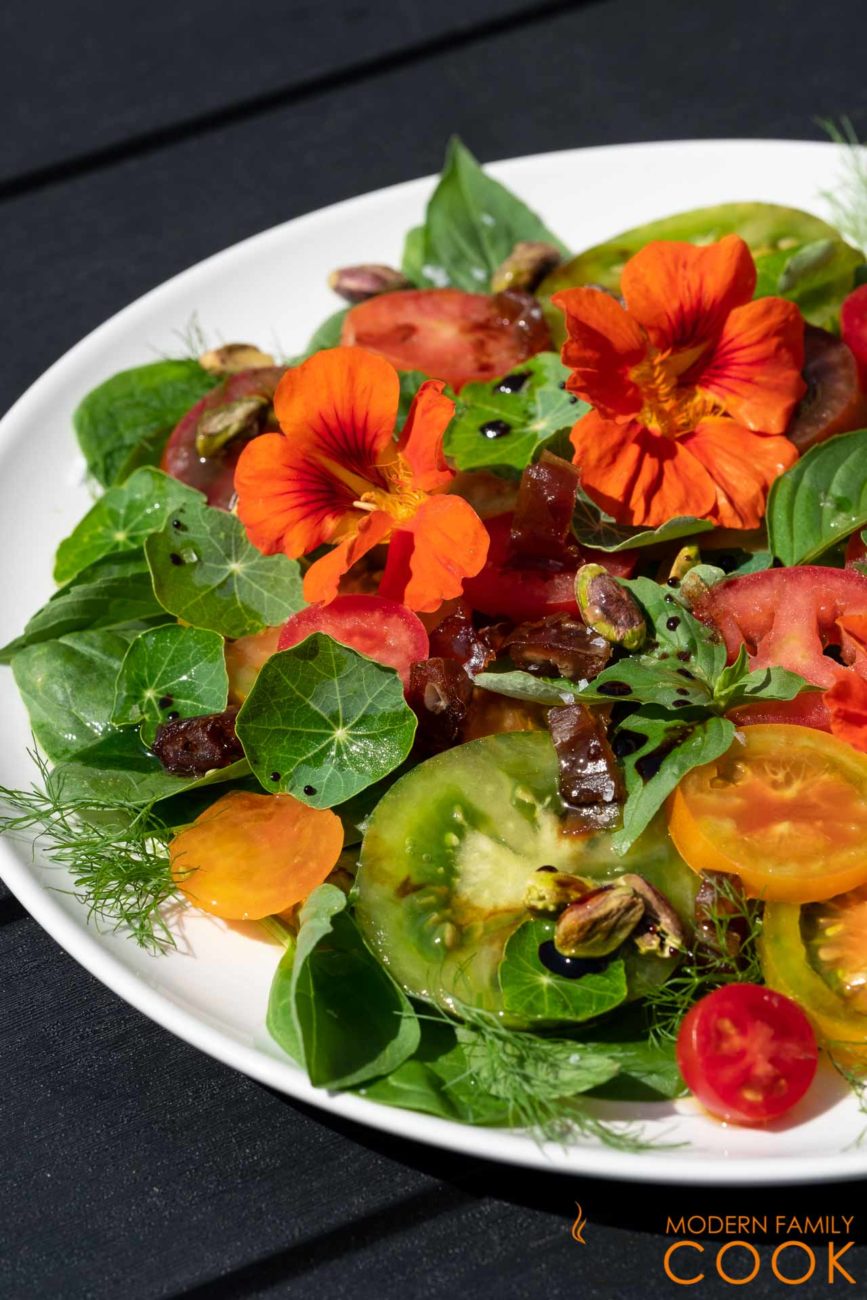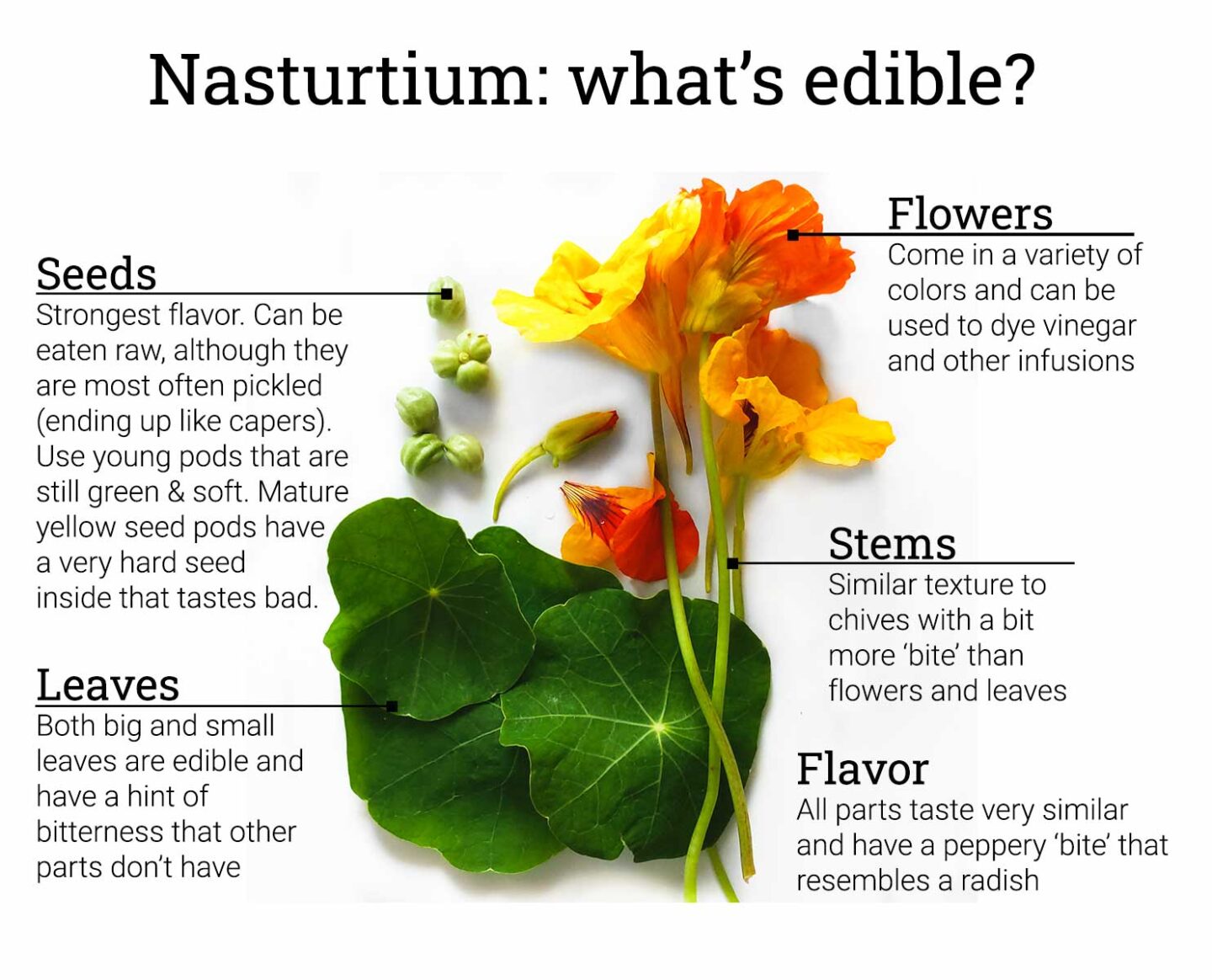Nasturtiums And Tomatoes: The Perfect Companion Plants
Nasturtiums and Tomatoes: The Perfect Companion Plants
Nasturtiums and tomatoes are two of the most popular garden plants, and for good reason. They're both easy to grow, beautiful to look at, and delicious to eat. But did you know that they're also perfect companion plants?
That's right, nasturtiums and tomatoes can actually benefit each other in a number of ways. Here are just a few of the reasons why you should consider planting these two plants together in your garden:
- Nasturtiums attract beneficial insects. One of the biggest problems that tomatoes face is insect pests. Aphids, whiteflies, and other bugs can quicklydecimate a tomato crop. But nasturtiums are a natural magnet for these pests. They're so attractive to insects that they're often used as trap crops. By planting nasturtiums near your tomatoes, you can help to distract pests and keep them away from your tomatoes.
- Nasturtiums deter harmful insects. In addition to attracting beneficial insects, nasturtiums also deter some harmful insects. For example, nasturtiums can repel Japanese beetles, spider mites, and squash bugs. This can help to protect your tomatoes from these pests and keep your crop healthy.
- Nasturtiums improve soil quality. Nasturtiums are nitrogen-fixing plants. This means that they can take nitrogen from the air and convert it into a form that plants can use. This can help to improve the soil quality in your garden and provide your tomatoes with the nutrients they need to thrive.
- Nasturtiums provide ground cover. Tomatoes can be susceptible to weeds, especially if they're planted in a garden bed that doesn't get a lot of sunlight. Nasturtiums can help to prevent weeds by providing ground cover. Their dense foliage will shade out the soil and make it difficult for weeds to germinate.
- Nasturtiums are edible. Both the leaves and flowers of nasturtiums are edible. They have a peppery flavor that can be used in salads, sandwiches, and other dishes. You can also pickle the seed pods and use them as a substitute for capers.
As you can see, there are many reasons why you should consider planting nasturtiums and tomatoes together in your garden. These two plants can benefit each other in a number of ways, and they're both beautiful and delicious to boot. So next time you're planning your garden, be sure to add nasturtiums and tomatoes to your list!
Nasturtiums and tomatoes are a classic garden combination, and for good reason. The nasturtiums' bright flowers add a splash of color to the tomato plants, and the tomatoes' fruit provide a tasty snack for both humans and pollinators. If you're looking to add some nasturtiums and tomatoes to your garden, or if you just want to learn more about this popular pairing, be sure to visit Home Gardening.
FAQ of nasturtium with tomatoes
- Q: What are the benefits of planting nasturtiums with tomatoes? A: Nasturtiums are a great companion plant for tomatoes because they can help to deter pests, attract pollinators, and improve the overall health of your tomato plants. Nasturtiums have a strong scent that some pests find unpleasant, so they can help to keep aphids, whiteflies, and other insects away from your tomatoes. They also attract beneficial insects, such as ladybugs and hoverflies, which help to prey on pests. In addition, nasturtiums can help to improve the drainage and aeration of the soil around your tomato plants, which can help to prevent root rot and other diseases.
- Q: How close should I plant nasturtiums to tomatoes? A: You should plant nasturtiums about 12 inches away from tomatoes. This will give them enough space to grow and thrive, without crowding out your tomato plants.
- Q: What kind of soil do nasturtiums need? A: Nasturtiums prefer well-drained soil that is rich in organic matter. They can tolerate a variety of soil pH levels, but they will grow best in slightly acidic soil (pH 6.0-6.8).
- Q: How much sun do nasturtiums need? A: Nasturtiums need full sun to partial shade. They will produce more flowers if they get at least 6 hours of sunlight per day.
- Q: How often should I water nasturtiums? A: Nasturtiums need regular watering, especially during hot, dry weather. Water them deeply once or twice a week, or more often if the soil is dry.
- Q: How do I fertilize nasturtiums? A: Nasturtiums are not heavy feeders, but they will benefit from a light application of fertilizer every few weeks. You can use a balanced fertilizer, such as a 10-10-10 fertilizer, or a fertilizer specifically formulated for flowers.
- Q: How do I deadhead nasturtiums? A: Deadheading is the process of removing spent flowers. This will encourage your nasturtiums to produce more flowers. You can deadhead nasturtiums by pinching off the spent flowers with your fingers.
- Q: How do I prevent nasturtiums from spreading? A: Nasturtiums can be invasive if they are not contained. To prevent them from spreading, you can plant them in a pot or planter, or you can surround the planting area with a barrier, such as a border of bricks or stones.
- Q: What are some pests and diseases that can affect nasturtiums? A: Nasturtiums are relatively resistant to pests and diseases. However, they can be susceptible to aphids, whiteflies, and spider mites. They can also be affected by powdery mildew and black spot. If you notice any pests or diseases on your nasturtiums, you can treat them with an insecticidal soap or neem oil.
Image of nasturtium with tomatoes
- Nasturtium flowers and tomatoes growing in a garden. The nasturtium flowers are yellow and orange, and the tomatoes are red and green.

- A close-up of a nasturtium flower and a tomato. The nasturtium flower is yellow and has a ruffled edge. The tomato is red and has a few small green leaves.

- A bowl of mixed salad greens with nasturtium flowers and tomatoes. The salad greens are green, red, and yellow. The nasturtium flowers are yellow and orange, and the tomatoes are red and green.

- A plate of bruschetta with nasturtium flowers and tomatoes. The bruschetta is topped with tomato slices, mozzarella cheese, and basil. The nasturtium flowers are yellow and orange, and the tomatoes are red and green.
- A sandwich with nasturtium flowers and tomatoes. The sandwich is made with bread, cheese, and tomato slices. The nasturtium flowers are yellow and orange, and the tomatoes are red and green.

- A salad with nasturtium flowers, tomatoes, and cucumbers. The salad is made with greens, tomatoes, cucumbers, and nasturtium flowers. The nasturtium flowers are yellow and orange, and the tomatoes are red and green.

- A soup with nasturtium flowers and tomatoes. The soup is a bright orange color, and it is topped with nasturtium flowers and tomato slices.

- A stir-fry with nasturtium flowers and tomatoes. The stir-fry is made with vegetables, tofu, and nasturtium flowers. The nasturtium flowers are yellow and orange, and the tomatoes are red and green.

- A cake with nasturtium flowers and tomatoes. The cake is a light green color, and it is decorated with nasturtium flowers and tomato slices.

- A pizza with nasturtium flowers and tomatoes. The pizza is made with a white crust, tomato sauce, mozzarella cheese, and nasturtium flowers. The nasturtium flowers are yellow and orange, and the tomatoes are red and green.

Post a Comment for "Nasturtiums And Tomatoes: The Perfect Companion Plants"